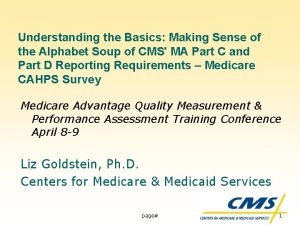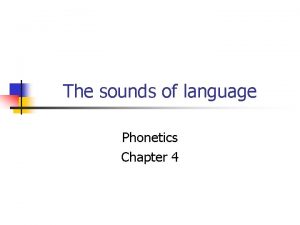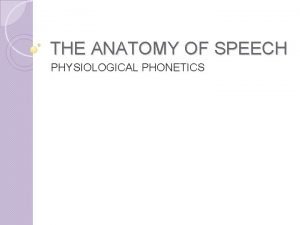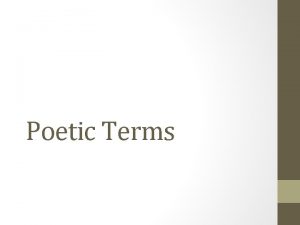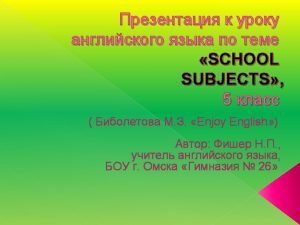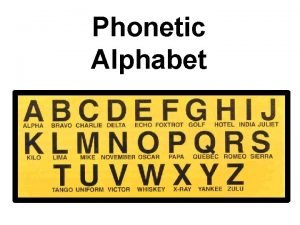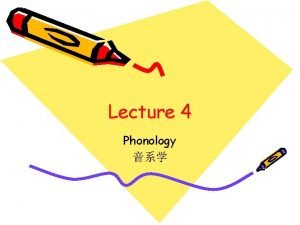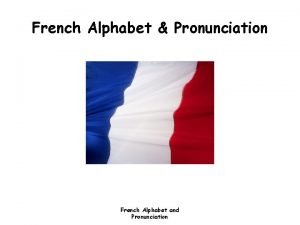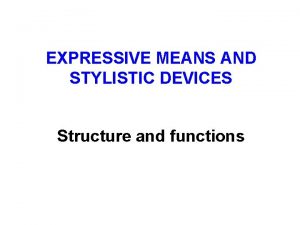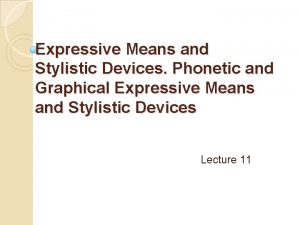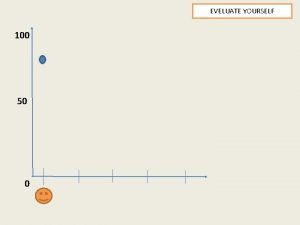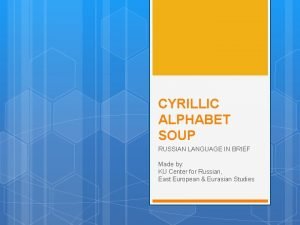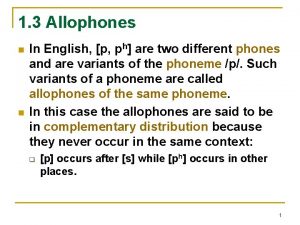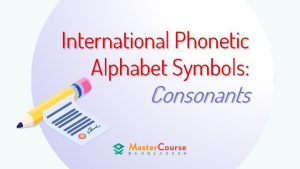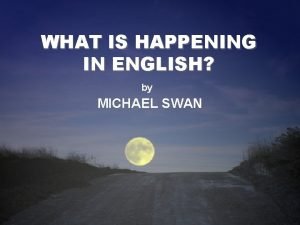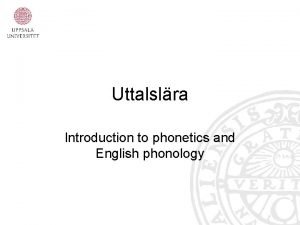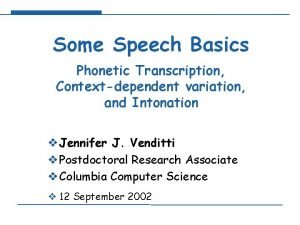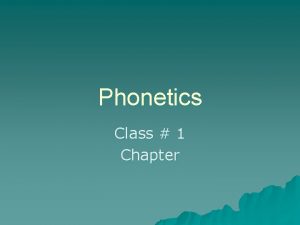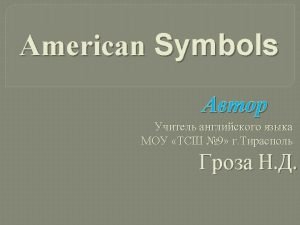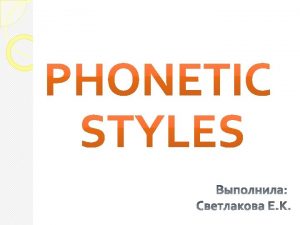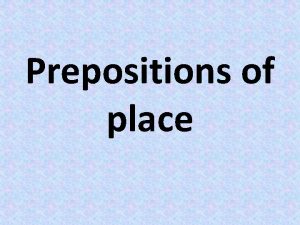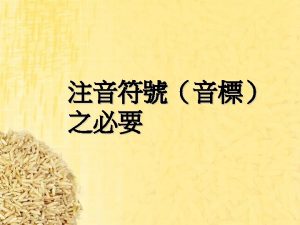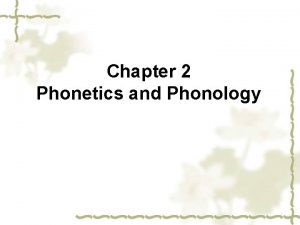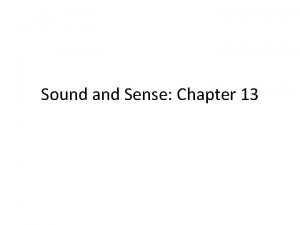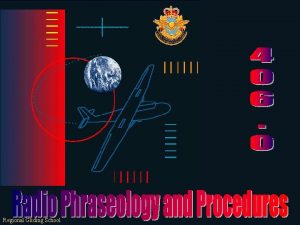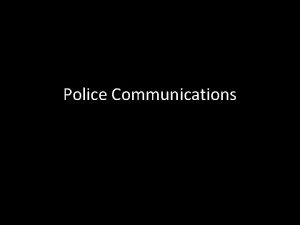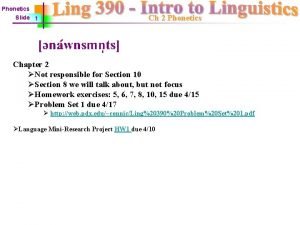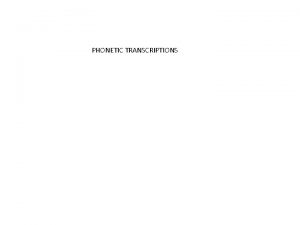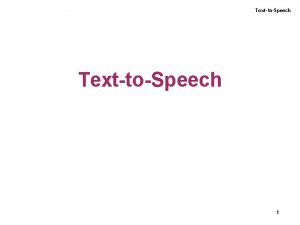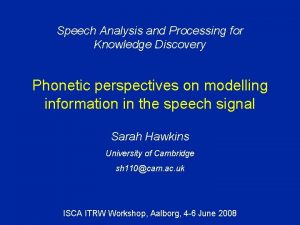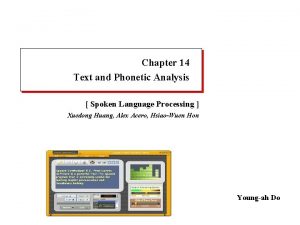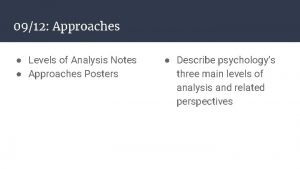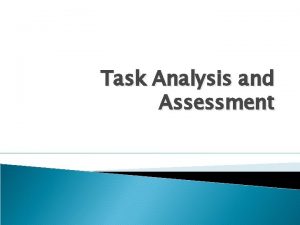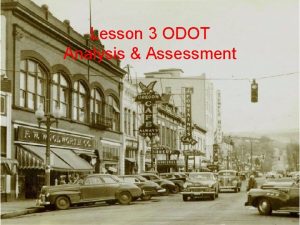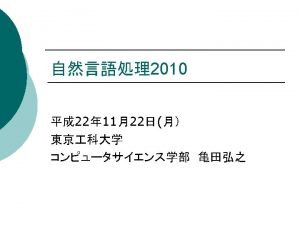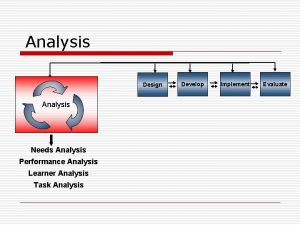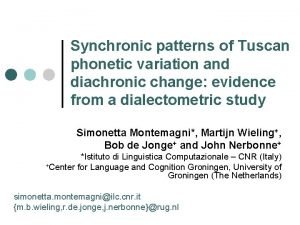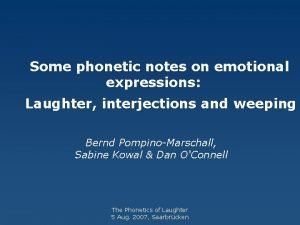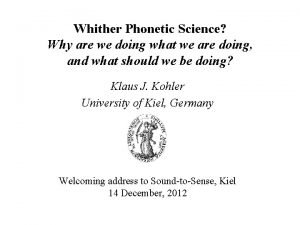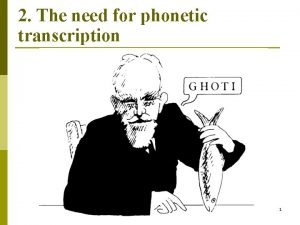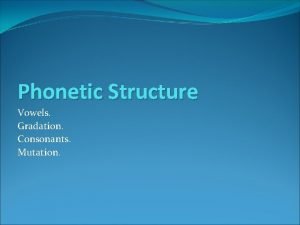Approaches to Assessment Assessment Approaches Analysis of Phonetic


















































- Slides: 50

Approaches to Assessment

Assessment Approaches • Analysis of Phonetic Inventories – Consonant Inventory – Vowel Inventory • • Stress Patterns Syllable Sequence/Structure Analysis Consonant Cluster Production Distinctive Feature Analysis Place and Manner Analysis Phonological Process Analysis Contextual Testing

Analysis of Phonetic Inventories • Performed with children in Stage 2 and early Stage 3 See Bliele page 32 for table • Describes ability to pronounce – Distinctive features – Sounds – Syllables – Stress patterns • Does not specify if person speaks correctly

Table II. 1

Consonant Inventories/Production Analysis • Performed on children Stages 2 to 4 • Attached to age norms • Norms exist for consonant inventories of unintelligible and intelligible speech (page 34) Table 5. 1 and 5. 2 • For analysis of intelligible speech, a consonant is established when it occurs in at least two different words. • For analysis of unintelligible speech, a consonant is established when it occurs in at list three different words.

Table 5. 1

Table 5. 2

Consonant Inventory • The developmental level of a client’s consonant inventory is that most closely approximating the number and type of client’s established consonants. (see page 106 Bliele, tables 11. 1 and 11. 2) • Categories for acquisition of consonants and consonant clusters – – – Categories Mastered Acquired Emerging Rare Absent Percentage 75 -100 50 -74 10 -49 1 -10 0 Chances (5) Chances (10) 4/5 -5/5 8/10 -10/10 words 3/5 5/10 -7/10 2/5 1/10 – 4/10 0/5 1/10 0/5 0/10 Bliele (pg 106)

Table 11. 1

Table 11. 2

Most frequently misarticulated sounds /s, z, , , t , d , v, r, w/

Vowel Inventory Pollock (1991) recommends vowels and dipththongs to be assessed: Non-rhotic /I, I, ei, , ae, u, , ou, , a. I, au, i) Rhotic (vowel = shwar) / , I , , , /

Stress Patterns • Beat of words – Primary stress is indicated by placing a line above the vowel or beginning of syllable • permit or permit • Only include an aspect of a child’s phonetic inventory if it occurs in two or more words

Syllable Sequence/Structure Analysis • Analyze syllable sequences in words. – Describe words in terms of • Syllable boundaries • Sequences of consonants and vowels – Use period to indicate syllable boundaries • CCV. CV • Syllable Structure – Describe two levels of syllable structure • Syllable level • Consonant and vowel level S C V

Consonant Cluster Production • Performed with clients Stages 2 -4 • Categories for acquisition of consonants and consonant clusters – Categories Percentage (10) – Mastered 75 -100 10/10 words – Acquired 50 -74 7/10 – Emerging 10 -49 4/10 – Rare 1 -10 – Absent 0 Chances (5) Chances 4/5 -5/5 8/10 - 3/5 5/10 - 2/5 1/10 – 0/5 1/10 0/5 0/10 Bliele (pg 106)

Distinctive Feature for Consonants • Sounds are categorized into classes • Natural classes are groups of sounds in a language that share the same features – Articulatory – Acoustic – Auditory or • Each sound is analyzed in terms of constituent features. These features and not the phonemes are the smallest and most basic unit of phonological analysis • Features are theoretical constructs • System aims at providing a limited set of universal features that is adequate for describing the phonological constrasts of all languages in the world

Distinctive Feature Approaches • Speech sample should satisfy the following criteria – Describe patterns used by the speaker – Identify the ways in which these patterns differ from those used by normal speakers – Determine the implications of these disordered patterns for effective communication – Provide a basis for assessing changes during treatment

Distinctive Feature Approaches • DF theory groups sounds into classes according to the common features which define them • Singh and Polen (1972) features are more related to speech production – See table 4. 5 – – – Front/Back Nonlabial/labial Nonsonorant/sonorant Nonnasal/nasal Nonsibilant/sibilant Voiceless/voiced

Table Singh and Polen (1972)

Distinctive Feature Analysis Chart

Distinctive Feature Approaches • You can use – Tests and subtests • Traditional phonetic description can be used in much the same manner – Manner and place tables

Place and Manner Analysis

Traditional Chart

Place and Manner Analysis

Distinctive Feature for Vowels

• See Bliele, 1. 2 pg. 4 and Bankson, 1. 1 pg. 13 Place Height

Phonological Process Analysis • Simplifies groups of sounds and eliminate sound contrasts • Processes – Natural – Idiosyncratic

Phonological Process Analysis • Methods developed – Procedures for the analysis of children’s language (Ingram, 1976) – Phonological analysis: A multifaceted approach (Lund and Duchan (1978, 1983) – Natural process analysis (Shriberg and Kwiatkowski (1980) – Assessment of phonological processes (Hodson, 1980)

Contextual Testing • Purposes – Influence of surrounding phones – Consistency of misarticulations • Deep Test of Articulation (Mc. Donald) – Objected to three position testing because • Word and speech appear in sequence of syllables • Sounds do not appear in initial, medial and final positions but as releasers and arrestors in syllables • Too small a sample

Contextual Testing - Mc. Donald – Types of consonant connections • Simple = CV, VC, CVC • Double = – Between two vowels (VCV) – Across word boundaries – Perform both arresting and releasing functions in a sequential manner • Compound = consonant cluster • Abutting = two adjacent consonants are components of two different syllables • Finally, stimulability may be a better predictor for therapy

A procedure for completing phonological analysis and error pattern analysis Newman, et. al. Assessment and Remediation of Articulatory and Phonological Disorders. Columbus, OH: Charles E. Merrill

Transcribe • Transcribe the sample phonetically as a list of words • You can group according to their initial and final consonants

Example

Analyze • Analyze the syllable structures • A list of the different word structures of in the sample should be made • Write the syllable structure next to the word

Example

Analyze • Analyze substitutions and distortions • Syllable initial and syllable final • Errors should try to be coded as substitutions instead of distortions whenever possible • In these cases try to use narrow transcription

Example

List • Phonemes used correctly somewhere/anywhere in the sample (note word position), in some context • Phonemes appearing in the sample as substitutions, but never used correctly • Phonemes that were not represented in the sample words

Summaries

Summary Word Structures • • • V CV CVCVCV VVCV

Summary of Substitutions, Omissions, Distortions

Example • Phonemic Repertoire 1. 2. 3. 4. Used correctly all the time: w, h Used correctly in some context: p, b, m, w, t, d, n, h Appearing; not used correctly: none Not represented in sample words:

Examine • Examine the substituting and omission columns for phonological processes • Scan the omission column for final consonant deletion, number of times it does and does not occur and phonemes for which it applies • Scan the substitutions for stopping, fronting of palatals and/or velars, gliding or liquid simplification, cluster reduction, assimilation, voicing or devoicing and other processes

Examine (continued) • Notation should be made of which phonemes are affected

Distinctive Feature Analysis Chart

Traditional Description of Consonants Chart

Correct Sounds and Substitutions Chart

Example • Processes 1. Final consonant deletion – all phonemes 2. Stopping 3. Liquid simplification 4. Vocalization 5. Cluster reduction 6. Fronting

Contrastive Analysis • Used for – Dialect speakers – Second language learners • Mc. Gregor, Williams, Hearst and Johnson (1997)

Contrastive Analysis Process • Become familiar with the linguistic variety – – Literature Compare speech with other members of family Collect local norms Interviews • Collect data for contrastive analysis • Identify true errors – List all nonstandard patterns – Evaluate if patterns consistent with D 1/L 1 – If patterns are inconsistent they are true errors • Some inconsistent errors may indicate the person is in process of acquiring – Interpret the results • Use other information to verify your judgments, to validate
 Medicare phonetic alphabet
Medicare phonetic alphabet Pin pat is an example of what consonant
Pin pat is an example of what consonant Speech phonetic transcription
Speech phonetic transcription Larynx funtion
Larynx funtion Speech phonetic transcription
Speech phonetic transcription Indirect metaphor definition
Indirect metaphor definition Odd phonetic transcription
Odd phonetic transcription Phonetic sentences exercises
Phonetic sentences exercises Wwii phonetic alphabet
Wwii phonetic alphabet Ipa chart
Ipa chart Phonetic similarity example
Phonetic similarity example Ilmu pengetahuan alam in english
Ilmu pengetahuan alam in english French alphabet phonetic pronunciation
French alphabet phonetic pronunciation Phonetic sds
Phonetic sds Branches of stylistics
Branches of stylistics Phonetic drill
Phonetic drill Police alphabet code
Police alphabet code Russianforeveryone
Russianforeveryone Major phonetic classes
Major phonetic classes Phonetic similarity example
Phonetic similarity example Types of elision
Types of elision Phonetic transcription
Phonetic transcription What is ipa?
What is ipa? Kauna unahang batas sa daigdig
Kauna unahang batas sa daigdig Phonetic erosion
Phonetic erosion Phonetics
Phonetics Phonological ambiguity examples
Phonological ambiguity examples Tomb phonetic transcription
Tomb phonetic transcription Phonetic alphabet song military
Phonetic alphabet song military Phonetic exercises
Phonetic exercises Phonetic drill
Phonetic drill Graphon stylistics
Graphon stylistics Phonetic definiton
Phonetic definiton Disney phonetic alphabet
Disney phonetic alphabet Phonetic peculiarities of style
Phonetic peculiarities of style Phonetic skill
Phonetic skill Phonetic drill
Phonetic drill Symmetry esthetics
Symmetry esthetics Phonetic drill
Phonetic drill Phonetic drill
Phonetic drill Cot phonetic transcription
Cot phonetic transcription Phonetic exercises
Phonetic exercises Ipa language
Ipa language S phonetic alphabet
S phonetic alphabet Hair phonetic
Hair phonetic Phonetic alphabet uk
Phonetic alphabet uk Transcribe and mark primary stress on society
Transcribe and mark primary stress on society Shatter onomatopoeia
Shatter onomatopoeia Alfa beta charlie
Alfa beta charlie Lapd alphabet
Lapd alphabet Transcription sounds
Transcription sounds
